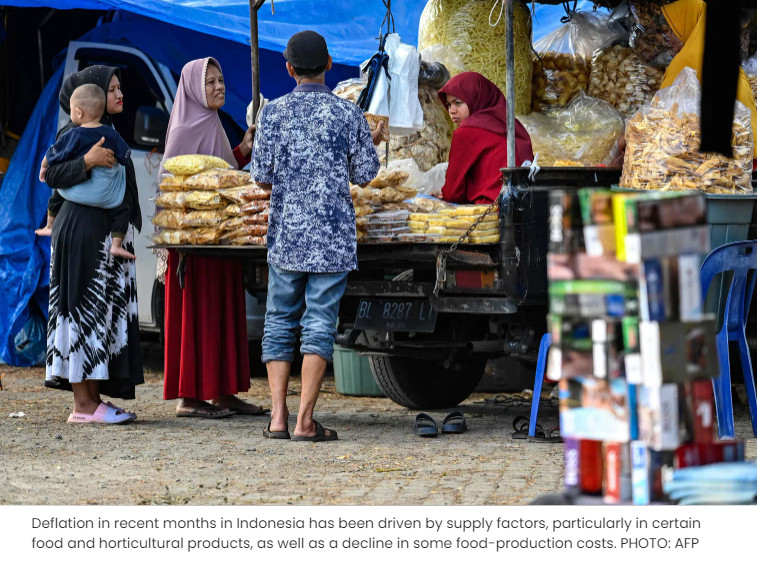Indonesia’s inflation falls to 2.12% in August, paving way for potential interest-rate cuts
Last month’s headline inflation rate is the lowest since February 2022, and remains within central bank’s target range
Published Mon, Sep 2, 2024 · 03:35 PM
[JAKARTA] Indonesia’s consumer price index fell to 2.12 per cent in August from a year earlier, meeting market expectations, according to statistics data released on Monday (Sep 2). Lower staple-food prices contributed to the decline.
Last month’s headline inflation rate was the lowest since February 2022, holding steady from the 2.13 per cent in July and matching the forecast in a Reuters poll. It also remains within Bank Indonesia’s (BI) target range of 1.5 to 3.5 per cent.
Deflation in recent months has been driven by supply factors, particularly in certain food and horticultural products, as well as a decline in some food-production costs according to Pudji Ismartini, deputy head of Statistics Indonesia.
South-east Asia’s largest economy saw a harvest season in July and August that resulted in lower prices for key staples such as rice, corn, and chilli.
Meanwhile, on a monthly basis, core inflation – excluding volatile items such as fuel – rose to 2.02 per cent last month, up from 1.95 per cent in July, and slightly exceeded the 1.98 per cent forecast in the poll.
The statistics bureau reported that Indonesia saw a rise in gold prices, driven by a surge in global gold prices.
Indonesia has managed to keep inflation within the central bank’s target range by controlling energy-subsidy prices and government social-assistance programmes.
JPMorgan forecasts that Indonesia’s inflation will fall below 2.7 per cent this year, and expects it to decrease further to 2.5 per cent next year.
With inflation remaining low and moderate, economists suggest that BI may have more room to cut interest rates in the final quarter of this year, especially in light of US Federal Reserve chair Jerome Powell’s dovish stance and intention to cut rates later this year.
BI governor Perry Warjiyo indicated at the last meeting in August that the central bank could begin lowering borrowing costs by the fourth quarter of 2024, from the current multi-year high of 6.25 per cent.
Robert Carnell, ING’s regional head of research, Asia-Pacific, noted: “Inflation remains well-behaved, opening the door for BI to ease as soon as it feels the rupiah is stable enough to withstand lower rates.”
The prospect of an interest-rate cut drew foreign capital to Indonesia throughout August, with investors increasing their purchases of Indonesian government bonds and strengthening the local currency.
The government successfully raised three trillion rupiah (S$252 million) from the sale of debt papers due 2064 through a private placement last week. The move helped strengthen the rupiah, which rose to 15,530 in early trading on Monday.
Makoto Tsuchiya, an economist at Oxford Economics, had said in May that monetary easing in Indonesia would help bolster growth as the economy continues its upward trajectory.
BI projects that the economy will likely grow between 4.7 and 5.5 per cent this year.
However, Fithra Faisal, a senior economist at Samuel Sekuritas, noted that the softer inflation coincided with a contraction in Indonesia’s manufacturing sector over the past two months, indicating a potential weakening in consumer purchasing power.
Indonesia’s manufacturing purchasing managers’ index fell to 48.9 in August 2024 from 49.3 in July, marking the second consecutive month of contraction in the sector. Prices in communication and financial services continued to decline steadily, with a consistent rate of minus 0.16 per cent.
Faisal said: “Since this sector serves as a key demand indicator for the economy, we anticipate continued lagging consumption, in line with the decline in the consumer confidence index and the downward shift in the middle class.”



